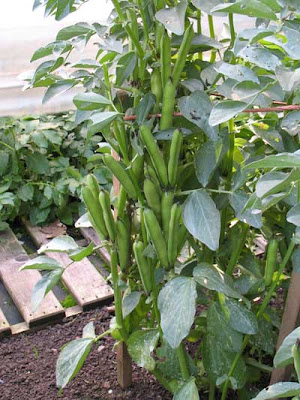Why grow broad beans?
- Remains of Broad Beans have been found in Israel which date back to 6,500 BC. This makes the humble bean one of the earliest vegetables to be cultivated.
- They are extremely easy to grow and produce a crop as early as mid-June. Useful, because not many vegetables are available in the garden at that time of year.
- Fresh broad beans are extremely nutritious and high in protein.
- Broad beans add a large amount of nitrogen to the soil in which they grow, which means free fertilizer.
- The Egyptians believed that when a person died his soul temporarily resided in a broad bean prior to passing into the next life.
- Broad Beans are very tolerant of the soil they grow in. They prefer a deep free draining soil. Most soils however are perfectly adequate for broad beans although they will not stand being water-logged.
- They prefer a sunny site which is not exposed to high winds. Most varieties will grow to about 1.2m (4ft) and they form a dense barrier of foliage. So consider the impact that the shade they will cast will have on plants growing nearby.
- Broad beans are very frost hardy and will germinate in a soil temperature as low as 2°C (35°F). Sowing time is around late March in England. However if your soil is free draining they can sown in early autumn when the weather is cooling down. This will give a crop about three weeks earlier than a spring sowing.
- A week or so before sowing the seed add a nitrogen feed to the soil. Although Broad Beans produce their own nitrogen in little nodules along the roots, this does not happen until the plants begin to grow strongly. So a little extra nitrogen at the beginning will get them off to a good start.
- Dig out a drill in the soil to a depth of 6cm (2in) and 20cm (8in) wide. Sow the seed in two rows, one row down one side of the drill, the other row down the other side. Each bean in a row should be spaced 25cm (10in) apart from the next bean.
- As soon as young beans appear at the base of the plant it's time to 'pinch out' the growing tips. Go to the very top of the plant and remove the tip with two leaves attached, you can compost these or steam them as a leaf vegetable.
- Spacing shouldn't be compromised as good airflow is essential for combating fungal disease.
- As the plants grow you will need to stake them to prevent the fragile stems from bending or breaking and pods being damaged. Stake after the seedlings are up and use anything from pea sticks to bamboo with string to support the plant.
- Dwarf varieties will need less space and less staking and are well worth considering especially on windy or small sites.
Harvesting
- Pick from the bottom up when ripe and continue to harvest frequently. Finger thick beans can be eaten whole or wait until the pod bursts open to harvest the fully ripe beans inside.
- When finished, cut off stems and dig roots back into the soil to make use of captured nitrogen.
- Broad beans are great for storing. You can dry or freeze the beans. To freeze, pick fresh, pod, place in a plastic bag and freeze. To dry, pick, pod and lay out the beans in a dry place. Leave beans to completely dry and store in an air tight container. These can be sown next year or rehydrated for use in cooking.



No comments:
Post a Comment